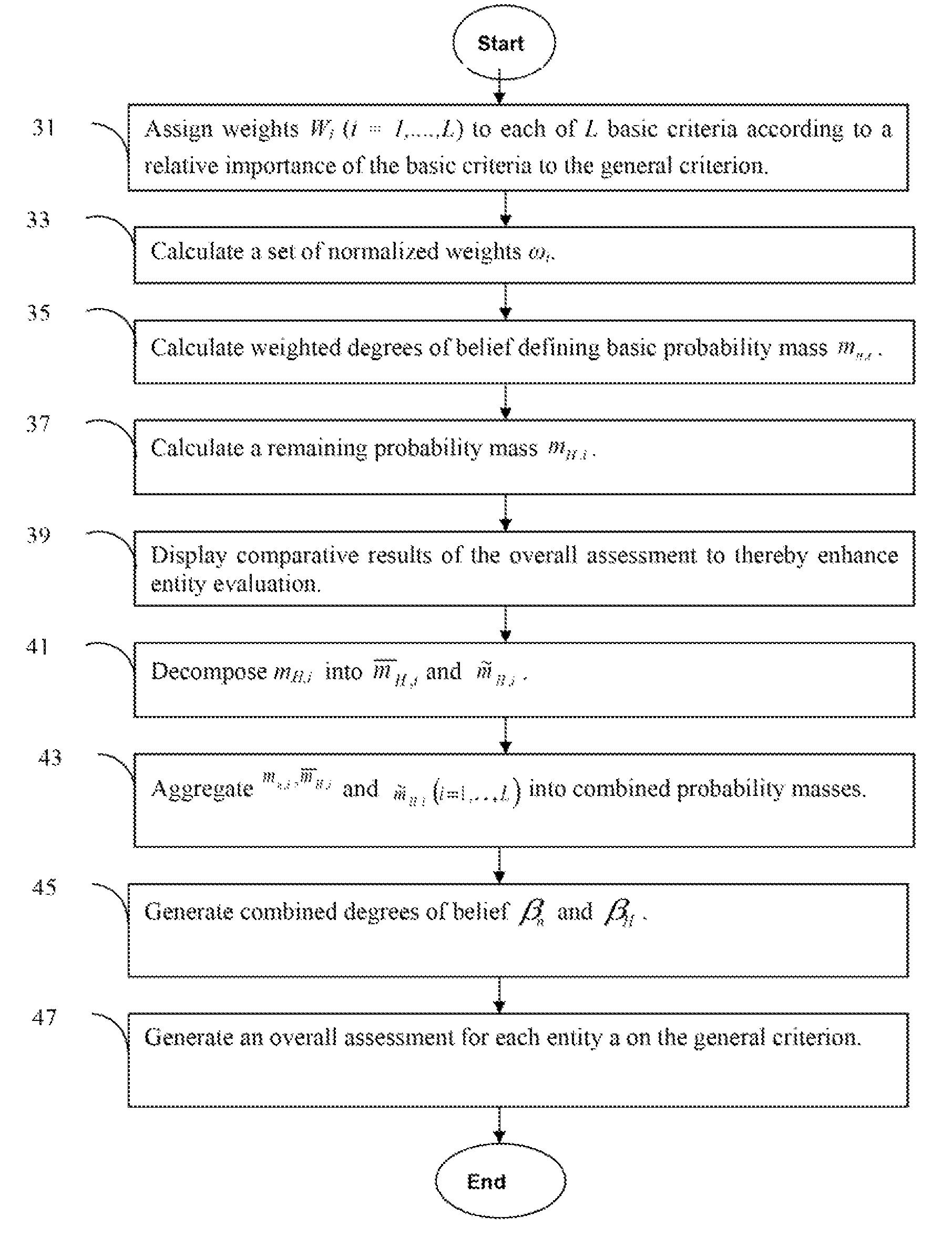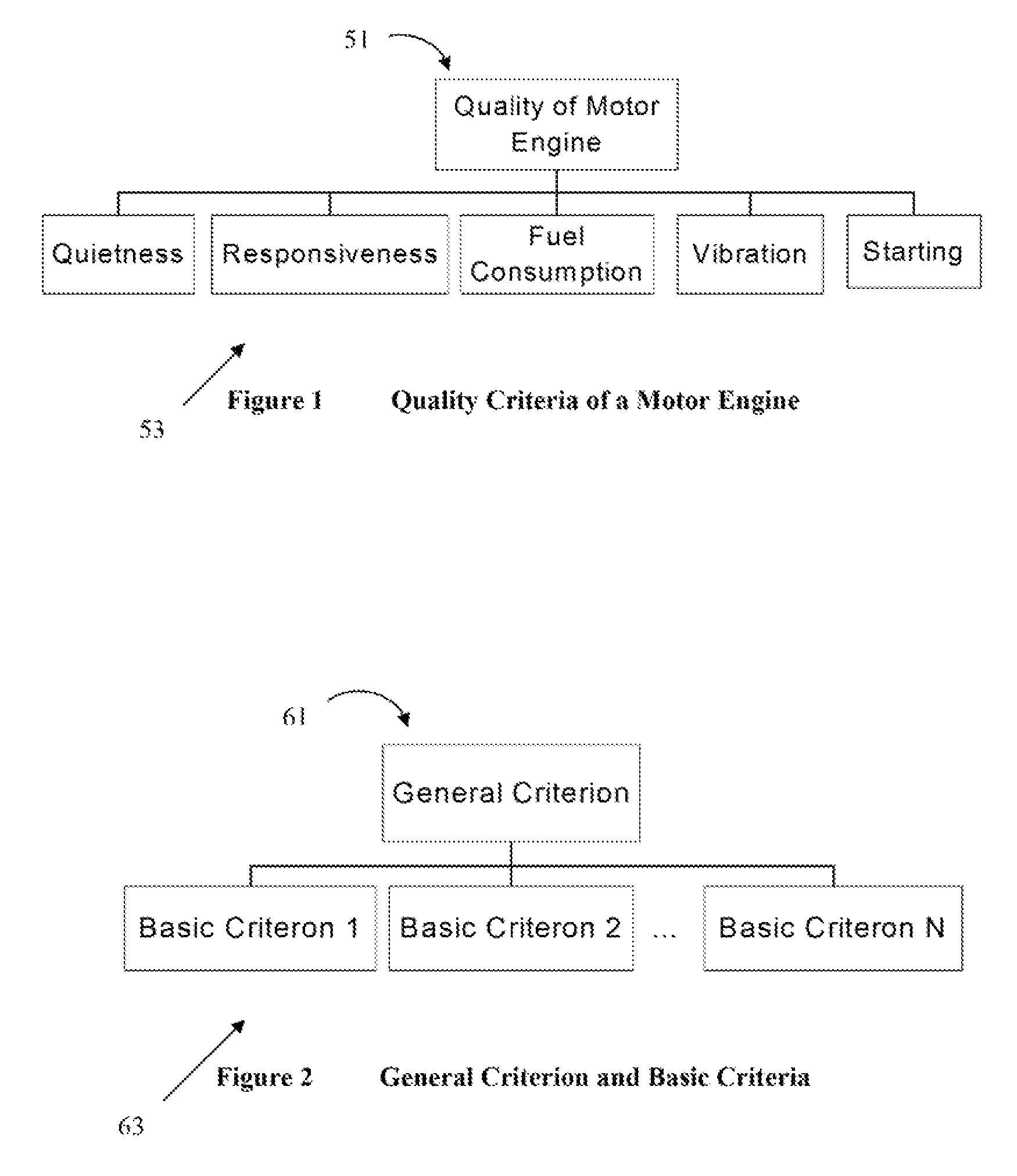Methods for multiple attribute decision analysis under uncertainty
a decision analysis and uncertainty technology, applied in the field of methods and decision making apparatus, can solve the problems of difficult to apply mcuf methods in a satisfactory way, company often will not do business with a supplier, and tedious procedures
- Summary
- Abstract
- Description
- Claims
- Application Information
AI Technical Summary
Benefits of technology
Problems solved by technology
Method used
Image
Examples
example
Assessment Criteria
[0153]In this example a motorcycle assessment problem is examined using both complete and incomplete (imprecise) data of both a quantitative and qualitative nature. The belief structure will be used to facilitate continuous and imprecise assessments for qualitative criteria. For quantitative criteria, both certain and random numbers are taken into account. The transformation techniques are used to transform the various types of information into a unified framework. Software is used to support the analysis. The main window of the display produced by the software is shown in FIG. 3 for the motorcycle selection problem.
[0154]The assessment problem has seven main criteria: Price, Displacement, Range, Top speed, Engine quality; Operation system and General finish. The first four criteria are quantitative and are measured using the following different units: pound sterling, cc, miles and mph, respectively.
[0155]The last three criteria are qualitative and difficult to me...
PUM
 Login to View More
Login to View More Abstract
Description
Claims
Application Information
 Login to View More
Login to View More - R&D
- Intellectual Property
- Life Sciences
- Materials
- Tech Scout
- Unparalleled Data Quality
- Higher Quality Content
- 60% Fewer Hallucinations
Browse by: Latest US Patents, China's latest patents, Technical Efficacy Thesaurus, Application Domain, Technology Topic, Popular Technical Reports.
© 2025 PatSnap. All rights reserved.Legal|Privacy policy|Modern Slavery Act Transparency Statement|Sitemap|About US| Contact US: help@patsnap.com



